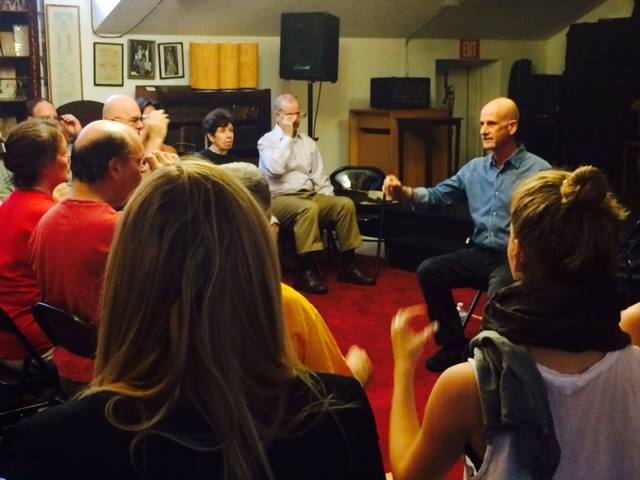 Words we use may have a meaning, or even several possible meanings. As importantly, words can have different associations for people. A word such as ‘posture’ can have many meanings for people. With that in mind…
Words we use may have a meaning, or even several possible meanings. As importantly, words can have different associations for people. A word such as ‘posture’ can have many meanings for people. With that in mind…
Direction
Direction may be thought of as telling yourself what you want to do. For instance, ‘I wish to free my neck’ is a direction. It means letting go of the excess tension in the neck muscles.
You may say to yourself ‘I’m going to direct my head to the right without tensing my neck’ , or I’m going to direct my hand from my side to the computer keyboard without tensing my shoulders, arms, neck, or jaw. The more you learn and the more practice, the more you can direct.
Here’s what F.M. Alexander said of direction: “The process involved in projecting messages from the brain to the mechanisms and in conducting the energy necessary to the use of these mechanisms.”
Thinking in Activity
Thinking in activity may be thought of as ‘direction in movement.’
We want to perform activities or movements with the minimum amount of tension required. We are talking about both muscular and mental tension. Some have called thinking in activity ‘relaxation in activity.’ Relaxation is a tricky word though. Relaxing is not collapsing. We need some degree of tension for everything we do, but how much? A better question might be: how little? The Alexander Technique helps us become aware.
End-gaining
End gaining occurs when the end is made to be more important than the means. It’s the goal rather than how you reach the goal. This is one of the ways we get into trouble, possibly getting into pain. We concern ourselves with what we’re going to do, rather than how we’re going to do it. End-gaining can readily be seen when we’re running late. If we’re walking we might poke our necks forward. This may also occur when we’re driving, as if that will make us get there faster! Sometimes we concentrate so hard on the objective, we entirely miss the journey. This may be applicable to how we sit down, stand up, walk, how we live our day and how we live our lives.
Means-whereby
The means whereby is the ‘how’ in what you do. It’s ‘how’ you walk, not just that you’re late and you want to get there quickly. It’s also being in the moment, rather than just thinking about the objective or the future. When we employ the means whereby, we take responsibility for our actions because we are making conscious choices.
Inhibition
F.M. Alexander gave this term an interpretation before Freud’s more popular definition. Freud’s definition has to do with suppression, or repression. Alexander used the word in a different way. Alexander’s definition has more to do with stopping, or pausing. You could think of it as putting a space between a stimulus and a response, which will give you a chance to do something new before your habit has a chance to kick in. This can take considerably less than a second, so inhibition is not a waste of time.
Free Your Neck
One of the very first principles of the Alexander Technique is the idea to ‘free your neck.’ How do you do that? You free your neck by releasing extra tension. We certainly all know how to tense and release our biceps, but we usually go through life ignoring the muscles in the back of the neck, except when they start to be painful. Although there’s hardly ever a time when we need to consciously tense them, we tense them habitually. We want to free our necks of excess tension.
Primary Control
Alexander thought that the head, neck torso relationship was primary. If the neck is overly tensed, for instance, it will bring the head into a backward rotation putting pressure on the torso. The whole body/mind will not work as well under these conditions. Directionally we want the neck back and up and the head forward and up. Again, these words need to be experienced.
Forward and Up
We want our head to move forward and up. The forward part of forward and up can be confusing. In this case, forward is not poking your face towards the computer screen, for example. You could think of forward as a forward rotation of the head on the spine. Up is up, from the top of the spine to the crown of the head.
Non-Doing
When you learn to undo, you are developing the art of awareness. It’s the stillness out of which you may feel, see, sense, move. We want to learn to non-do so that when we do something, we can do it with the proper amount of tension and no more.
Stress
We all know what stress is, or do we? Have you ever felt stressed out? Many times when we think of stress we are thinking of stressful situations. The Alexander Technique concerns itself with how we react to stressful situations, or how we react to any stimulus at all. Our reaction, especially our habitual reaction, is something we can control, to a degree.
Mark Josefsberg-Alexander Technique NYC
(917) 709.4648










Leave A Comment